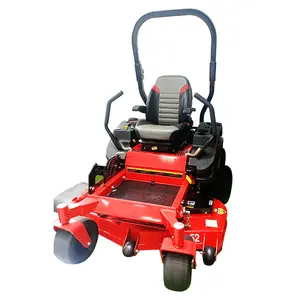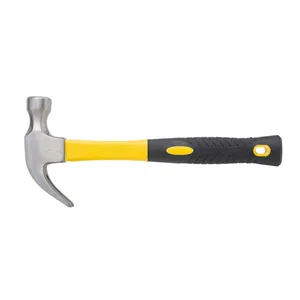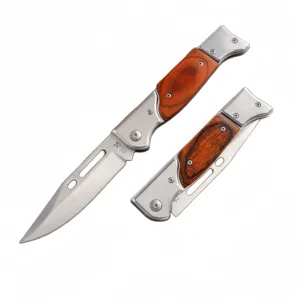Popular in your industry















Related Searches:


























Top categories
About handheld chainsaw sharpener
Introduction
Welcome to the ultimate guide to using a handheld chainsaw sharpener. As a DIY enthusiast, maintaining your chainsaw's efficiency is crucial, and a handheld chainsaw sharpener is an essential tool for this task. This guide will walk you through the different types of chainsaw sharpeners, the benefits of choosing a handheld option, and how to use and maintain it effectively. Whether you're a seasoned professional or a beginner, this guide will provide you with the knowledge and skills to keep your chainsaw in top condition.
Understanding Chainsaw Sharpeners
Chainsaw sharpeners are essential for maintaining the efficiency of your chainsaw. They come in different types, including manual, electric, bar-mount, and portable sharpeners. Manual sharpeners, the oldest type, require physical strength but don't need electricity. Electric sharpeners are popular for their efficiency and ease of use, but they require an electrical socket. Bar-mount sharpeners attach to the chainsaw's blade, making the sharpening process easier. Portable sharpeners are ideal for those on the move, offering basic sharpening capabilities. Each type has its pros and cons, and the choice depends on your specific needs.
Types of Chainsaw Sharpeners
Chainsaw sharpeners come in various types, each with its unique features and advantages. The compact universal chainsaw sharpener is a versatile tool that can sharpen chains of various pitches. The 3-in-1 electric chainsaw sharpener kit is easy to use and doesn't require chain removal. The bar-mount chainsaw sharpener offers accurate positioning. The 12V handheld chainsaw chain sharpener is a portable option that runs off a car battery. The chainsaw sharpener file kit is a manual, lightweight, and very portable option. Each type serves different needs and preferences, so choose according to your requirements.
Why Choose a Handheld Chainsaw Sharpener?
Hand-sharpening with a chainsaw file, a type of handheld chainsaw sharpener, is the most labor-intensive option, but it's also the most cost-effective. Using handheld metal files, you can sharpen each cutter on your chain and also file down the depth gauge. With a good bar-mount filing guide, you can get consistent and accurate results across each cutter without having to disassemble your chainsaw. This method is ideal for those who want to save on costs and have the time to dedicate to the task.
Getting Started with Your Handheld Chainsaw Sharpener
A chainsaw's cutters can be intimidating, but with the right tools and knowledge, you can sharpen your chainsaw yourself. It's a quick process that can turn your slow-cutting chainsaw into a highly efficient tool. You can sharpen the chain right on the saw and right by the wood you’re cutting. Regular sharpening can extend the life of your chain. It's important to understand the structure of your chain, including the cutters and depth gauges, to effectively use a handheld chainsaw sharpener.
Understanding Your Chainsaw's Specifications
Understanding your chainsaw's specifications is crucial for using a handheld chainsaw sharpener effectively. The three key measurements to consider are pitch, gauge, and drive links. The pitch is calculated by measuring the distance between three rivets on the chain and dividing by two. The gauge refers to the thickness of the drive links, which can be found in the manual or on the chainsaw itself. Lastly, the number of drive links must be counted accurately to ensure the correct chain size. These specifications are essential for selecting and using the right chainsaw sharpener.
Preparing Your Chainsaw for Sharpening
To prepare your chainsaw for sharpening, first, clean the chain thoroughly using a resin solvent or a special chainsaw cleaner. Ensure that adhesive oil and tree resin are completely removed. Next, check the wear mark on the depth limiter or plate edge. If it's reached, consider replacing the chain. If there's enough material to sharpen, retighten the chain, activate the chain brake, and fix the chain guide in a vice. Remember to wear gloves to avoid injuries from the teeth of the saw chain. Mark the shortest cutting tooth as a guide tooth and start sharpening from there.
How to Use a Handheld Chainsaw Sharpener
To use a handheld chainsaw sharpener, first select the right file diameter to match the chain pitch. Use special saw chain sharpening files for best results. Hold the file at an angle of 30°, parallel to the service mark. Check your work by looking for a uniformly bright cutting edge. If you see dark areas, the cutter isn't sharp enough. After sharpening all cutters to the same length, turn the chainsaw 180° and repeat. For chains with humped drive links, lower the hump along with the depth gauge, but avoid touching the freshly sharpened cutter.
Step-by-Step Guide to Sharpening
Sharpening a chainsaw involves understanding the chain's structure and using the right tools. Inspect the cutters on your chain loop, which can be quickly sharpened with a round file. The angles on the cutters alternate to keep the saw cutting straight. After repeated sharpenings, the cutters can become level with the depth gauges, preventing the saw from cutting. Lower the depth gauges to the right height with a flat file and file guide. Remember to file at the right angles, stroke away from your body, and advance the chain as you work.
Safety Tips and Precautions
Before you start the process of sharpening your chainsaw, ensure you are wearing the necessary protective gear, including long sleeves and pants, sturdy work gloves, and eye protection. A dust mask or respirator can also be beneficial to avoid inhaling any particles. Always ensure your chainsaw is turned off before you start sharpening the chain. If you will be sharpening the chain with it still attached to the saw bar, ensure the chain is properly tensioned. Inspect the chain for any signs of damage. If the chain is unusually worn down or cracked, or if the rivets are loose, you may need to repair or replace components of your chainsaw.
Maintaining Your Handheld Chainsaw Sharpener
Maintaining your handheld chainsaw sharpener is crucial for its longevity and effectiveness. High-quality files are essential, and they must be kept rust-free. Remember, files have a lifespan and will eventually need replacing. It's recommended to have at least two files of each size on hand. Also, a removable type file handle is preferred for convenience and compactness. Regularly inspect each tooth on your chainsaw, ensuring the corner and chisel edge are sharp. Incorrect application of pressure with the file can ruin chains, so understanding the correct technique is vital.
Regular Maintenance and Replacement Parts
Maintaining your handheld chainsaw sharpener is crucial for its longevity and performance. High-quality files are essential, and they must be kept rust-free. Over time, even well-cared-for files will lose their bite and need replacement. It's recommended to have at least two files of each size on hand. Additionally, a removable type file handle is preferred for its convenience and space-saving benefits. Remember, proper maintenance extends the service life of your chainsaw sharpener, ensuring it remains efficient and effective throughout its use.
Conclusion
In conclusion, using a handheld chainsaw sharpener is a cost-effective and efficient way to maintain your chainsaw's performance. Understanding your chainsaw's specifications, preparing it for sharpening, and knowing how to use the sharpener correctly are all essential steps in this process. Safety precautions and regular maintenance of your sharpener are also crucial to ensure longevity and effectiveness. With this guide, you're now equipped with the knowledge to keep your chainsaw sharp and ready for any task. Remember, a well-maintained chainsaw is not only more efficient but also safer to use.



























